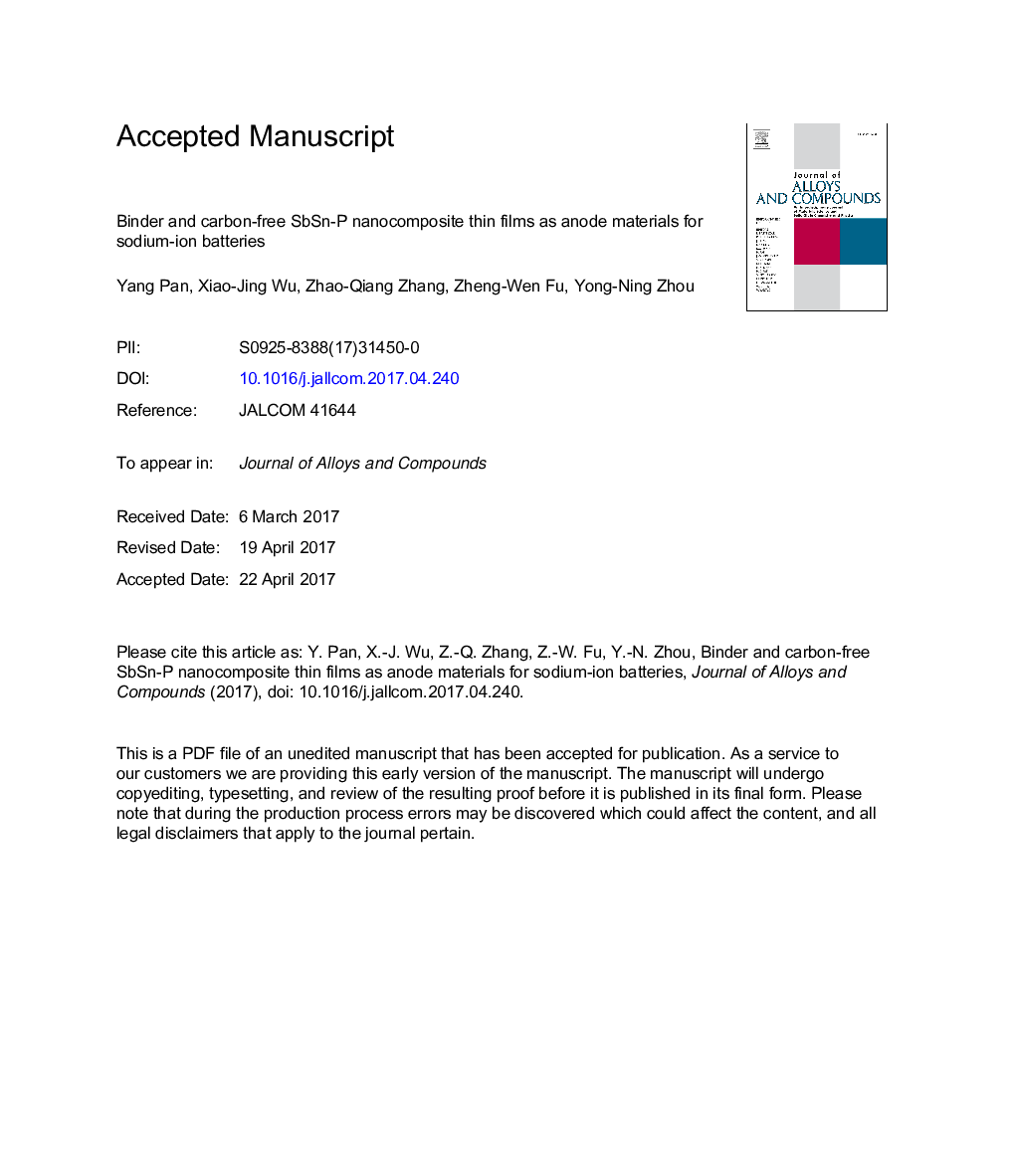| Article ID | Journal | Published Year | Pages | File Type |
|---|---|---|---|---|
| 5459108 | Journal of Alloys and Compounds | 2017 | 25 Pages |
Abstract
Tin-antimony/phosphorus nanocomposite thin films have been successfully prepared by pulsed laser deposition and are studied as anode materials for sodium ion batteries. The thin films exhibit a specific capacity of about 252 mAh gâ1 over 100 cycles at a rate of 250 mA gâ1, which is much higher than those for tin-antimony alloy, antimony or tin thin films. The improved electrochemical performance is attributed to the introduced phosphorus, which plays a key role in forming a stable solid electrolyte interface layer, thus enhances the reversibility. Phase separation is revealed after the initial cycle by forming the metallic tin and antimony nanoparticles. In addition, introducing phosphorus into tin-antimony alloy film can reduce the interfacial resistance between the electrode and electrolyte, as well as facilitate sodium-ion diffusion in the electrode.
Related Topics
Physical Sciences and Engineering
Materials Science
Metals and Alloys
Authors
Yang Pan, Xiao-Jing Wu, Zhao-Qiang Zhang, Zheng-Wen Fu, Yong-Ning Zhou,
